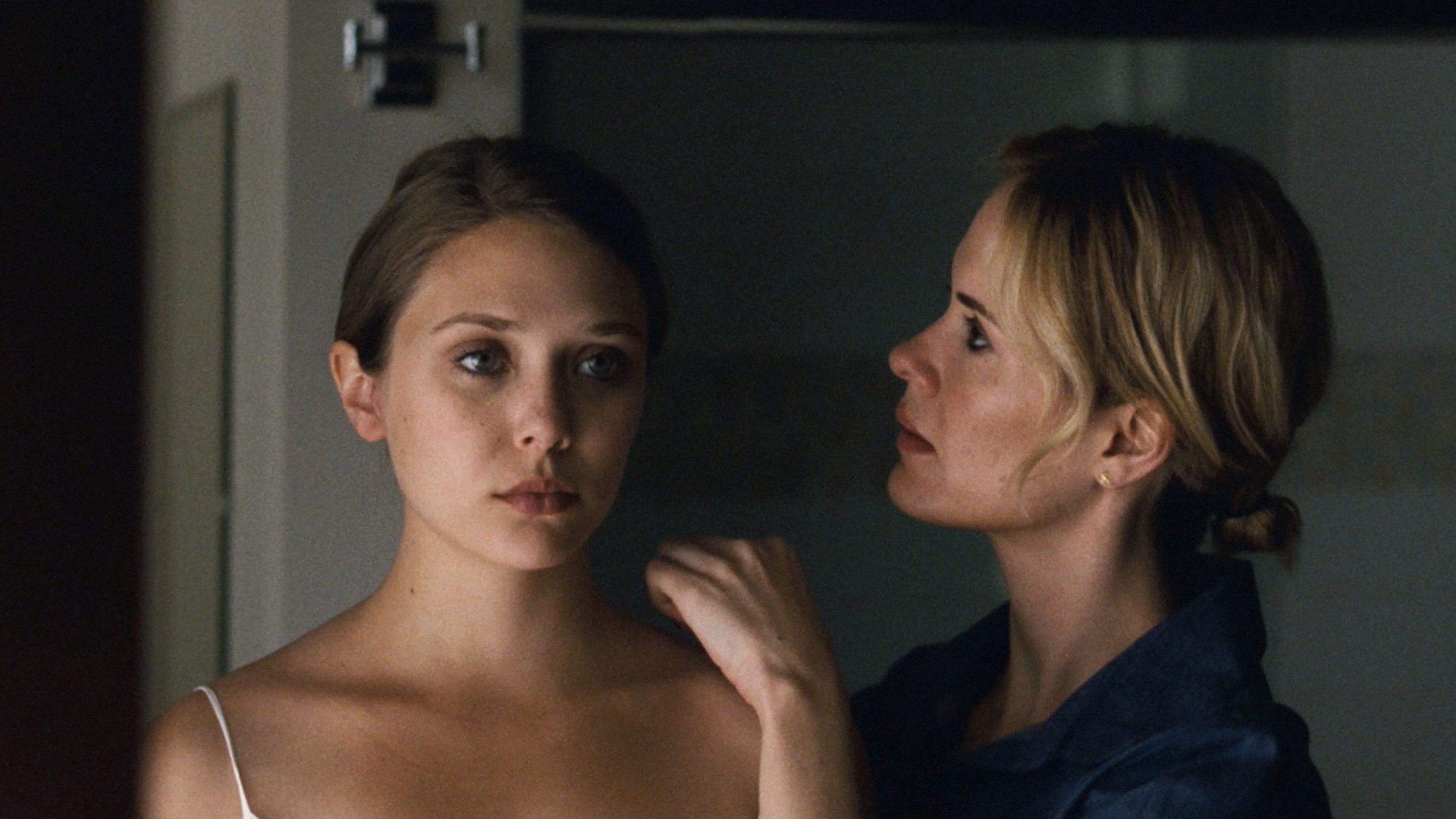Forget the trashy trauma of Luckiest Girl Alive, and watch this Elisabeth Olsen movie instead

Seen That? Watch This is a weekly column from critic Luke Buckmaster, taking a new release and matching it to comparable works. This week, how Netflix’s shrill and exploitative Luckiest Girl Alive pales in comparison to the cult recovery drama Martha Marcy May Marlene.
Recently Netflix seems to be getting off on provoking audiences with disgusting acts of depravity—but enough about the first season of Is it Cake? Dahmer vividly recreated the grotty apartment and heinous crimes of a serial killer; Blonde exploited the corpse of Marilyn Monroe while attempting to make a point about victimhood; and now Luckiest Girl Alive presents an unashamedly sensational depiction of trauma experienced by a survivor of a high school massacre.
Nary two minutes transpires before we see protagonist Tiffani (Mila Kunis) holding two knives dripping with blood: a hallucination she experiences while shopping for homegoods.
This is the dramatic opener, in other words, director Mike Barker establishing a tone as subtle as a two-by-four to the face. The film’s shrillness is verbal as well as visual: “snap out of it, psycho!” the voice inside Tiffani’s head instructs mid-hallucination, kicking off an extensive voice-over commentary with hints of an unreliable narrator. Barker puts this in highlighter pen when the film first jumps back in time to teenage Tiffani in English class, during which the teacher discusses The Catcher in the Rye (“Holden is what we call an unreliable narrator…”).
Flashbacks encroach more and more onto the primary narrative, the MacGuffin arriving in the form of a filmmaker approaching adult Tiffani to request her participation in a documentary about what we learn is “the deadliest private school shooting in history.” He implores her to “tell your side of the story” and suggests something mysterious, possibly sordid about her involvement in the atrocity: “People wanna know—were you a hero or an accomplice?”
And so Barker sets up a trio of cheap tricks to access Tiffani’s narrative: confronting images, excessive voice-over, and jumps back in time, eventually to a recreation of the shooting.

As a narrative exercise Luckiest Girl Alive embraces the easy options; as an investigation of trauma it’s rash and lurid—like an airport novel. Kunis is by far the most impressive asset, somehow maintaining her composure in this blizzard of garishness. For a far better depiction of trauma—and a production much more giving to its lead star—consult writer/director Sean Durkin’s excellent 2011 film Martha Marcy May Marlene, featuring an outstanding performance from Elizabeth Olsen as a young woman who has recently escaped from living in a cult.
Martha Marcy May Marlene
Martha (Olsen) seeks refuge with her older sister Lucy (Sarah Paulson), who she hasn’t spoken to for years. Durkin gradually teases out information about the cult, revealing glimpses of a hippy-like commune led by the creepily charismatic Patrick (John Hawkes), whose gentle demeanour masks wickedness and cunning. This film also deploys flashbacks, though the vibes are very different.
The temporal breaks in Luckiest Girl Alive are loud and sharp, but here they are smooth and slightly drifting, like coils of memory. Durkin finds ways to go back in time that don’t feel jolting, using visual connections—for instance the sight of a person stirring a glass of liquid—to segue from one period to the other.
In this example, the jump back reveals that every young woman’s initiation into the cult involves them consuming a spiked drink and being raped by Patrick—which the brainwashed women describe as a “cleansing.” Like Barker, Durkin stages some intensely unsettling scenes, but never exploitatively. It’s easy to be dramatic by cutting to a knife dripping with blood, and it’s easy to express aspects of a character’s psyche by having them babble away via voice-over. Using character and performance-oriented drama to chip away at trauma from unexpected directions is much harder.
Rather than having Martha verbally ponder the difficulties in readjusting to “normal” life, Durkin depicts small moments that reveal a discrepancy between the protagonist’s instinctual behaviour and societal expectations. Lucy for instance scolds her younger sister for taking off her clothes when swimming in a relatively open public space.

Later, Martha shocks Lucy and her husband (Hugh Dancy) when she lies next to them on their bed while they have sex—simply to experience the reassurance of human company during a difficult evening. These events might not sound hugely interesting, but they have a psychologically cumulative effect, building a space that’s ultimately far more shocking—especially when Martha Marcy May Marlene adds violent twists to the mix.
Olsen’s face is enough to build entire scenes around: she has this way of staring ahead, sort of listless and wanting, not exactly vacant or empty, but someplace else, wanting to feel something else. We like and care for her; we empathize with the cruel ways her past manifests in the present.
The latter is also true of Kunis in Luckiest Girl Alive, playing another character whose path forward must involve looking back. It’s almost remarkable that Kunis brings a degree of dignity and depth to her performance, given she has to fight the very fabric of the film to pull it off.




















